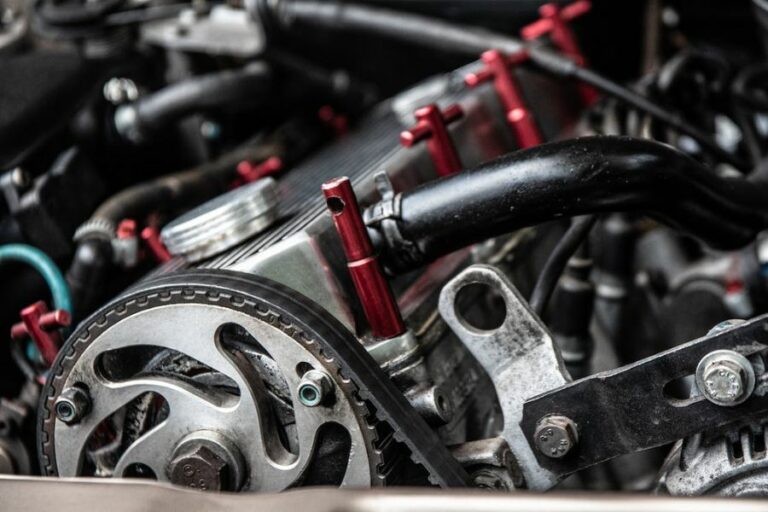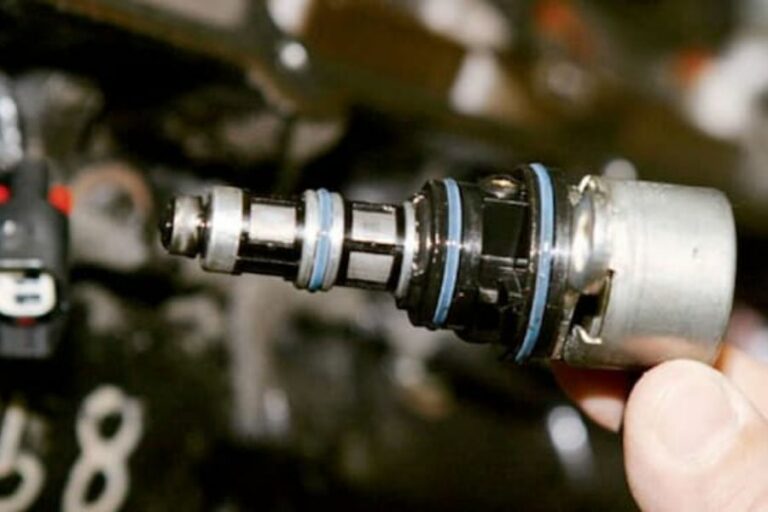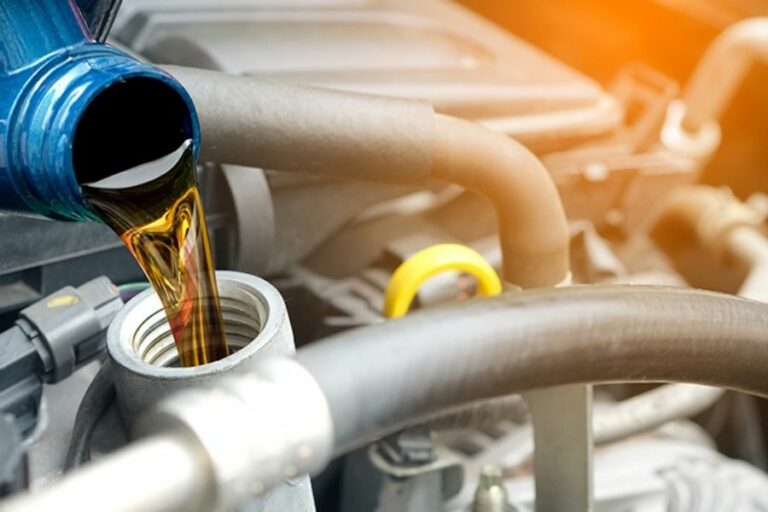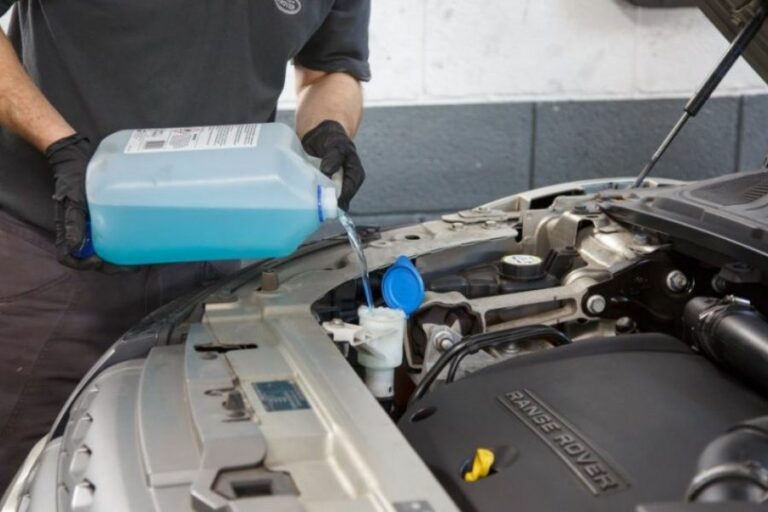Fuel Evaporation Leakage Check- Everything You Need to Know!
Fuel EVAP leakage occurs inside the evaporative emission control unit. For many reasons this unit might fail, causing black vapor to seep out of the pipes.
But what we are most concerned about is how you carry out a fuel evaporation leakage check successfully. The answer is right within this article. Make sure you don’t skip anything.
Common Symptoms of EVAP Leakage
EVAP leakage is different from typical fuel leakage. In this case, evaporated fuel coming out of the combustion chamber escaped into the atmosphere.
The emission control unit usually recycles the black fume by condensing it into fuel again. But that’s not possible anymore since the vapor is getting out of the pipes somehow.
Anyway, how do you even know such a problem exists in your EVAP system? After all, it’s not a regular thing to check whether the EVAP system is doing fine or not.
Here are some common symptoms of EVAP leakage. Let’s check them out.
Check Engine Light Turned On
First & foremost, you will notice that the engine light is on. Usually, this could mean a variety of engine errors. But each of these errors come with some specific type of signs including misfiring, stalling, overheating etc.
An EVAP leakage, however, is nothing like that. You won’t notice any disturbance in the car whatsoever. So, it’s simple. If you don’t feel any kind of driving issue while the warning light is activated, you should suspect an EVAP leakage .
Low Fuel Economy
Another symptom is the poor fuel economy of the engine. It might take you a while to discover.
The leaked fuel could have been added to your fuel tank. But since you have lost a subsequent amount of fuel, the fuel level goes down sooner than expected.
Bad Odor
Bad odor is common in any type of leakage issue be it fuel or lubricant. Even if you can’t see the leakage instantly, you will definitely smell it. That’s a clear sign that your EVAP system needs an immediate check-up.
Excess Smoke
You will notice more than usual smoke coming out of your car. Normally, the EVAP system controls the smoke emission through recycling.
The leakage will cause all the black vapor produced during combustion to get released into air. Needless to say, it will be easily visible to the eyes.
Lack of Power
Lack of power is related to fuel economy. You are driving with a less than ideal fuel level. It affects how much speed you can expect from your car.
Even after pressing the accelerator pedal, the car would lag. That’s when you must intervene and check for an EVAP leakage.
Read Also: How To Troubleshoot Brake Fluid Leaking From Rear Wheel?
How Do I Diagnose an EVAP Leakage?
Symptoms only make you realize something’s wrong. Here comes the interesting part. You can diagnose the engine for EVAP leakage, just to be sure. Check out some easy ways to do that.
OBD-2 Trouble Code
If you don’t want to hire a mechanic to identify the error in your car, get an OBD-II trouble code scanner. It tells you what exactly is wrong with your vehicle in codes.
Usually, an EVAP leakage is signaled through the P0440 error code. P is for powertrain, 0 indicates a generic engine issue, and 4 stands for the emission control unit.
The last two digits are specially kept to describe the type of disturbance within the EVAP (whether it’s a leak or something else).
Check out the table below for some common trouble codes for EVAP leakage.
| OBD-2 Trouble Code | Indication |
| P0442 | EVAP leak (small) |
| P0455 | EVAP leak (heavy) |
| P0456 | EVAP leak (minor) |
| P0457 | EVAP leak (loose fuel cap) |
Read Also: What Causes Brake Fluid Leaking From Caliper Bolt? (Fix Now)
EVAP Smoke Test
The scanner tells you whether the EVAP system is leaking. But which part in particular? That requires a thorough EVAP smoke test.
Even if you take the vehicle to a mechanic, he will run a smoke test first. It’s faster and more efficient than manually checking for leakage.
For that, all you need is a smoke test machine for sure. It comes with a compressor, flow gauge, pressure gauge, adapter gaskets, funnels, and pipes.
- Set the Machine Right
Start by setting up the machine. Locate the intake line and the airbox. You need a screwdriver to get the seal opened.
Once you are done, put an appropriate adapter (any size that fits) on the air box. Next, put a cone adapter along with an attached pipe on the intake line. To make everything tight and secure, use a hose clamp.
- Connect Hose to Machine
Get the little piece of hose connector and attach it to your air intake hose. Next, grab another pipe and join it to the hose connector.
The other end of the pipe will connect to the machine’s port. If you notice, the entire process is adapting one hose to another. The key is to not leave any gap between the joints.
- Run the Test
Go to the air compressor and connect it to another port within the smoke machine.
Next, get those power supply hooks and touch them to the positive and negative sides of the battery carefully. That should cause smoke to form within the machine.
- Control The pressure
The flow gauge and pressure gauge helps you control the smoke passed into your EVAP system.
Normally, if you run a smoke test on the other parts, 10 to 20 psi of pressure seems okay. But that’s dangerous when you are dealing with a sensitive EVAP leakage.
You don’t want the excess pressure to wreck some critical part that’s hard to replace.
So, try to stick with 1 or 2 psi (1 is preferable). If the leakage is minor, only then go up to 2 PSI. As for gross leakage, anything below 2 psi would be enough to detect that.
Finally, check whether the white smoke comes out.
Note: The machine comes with a bottle full of oil. You can run many tests using that liquid.
Read Also: Can Exhaust Manifold Gasket Leak Radiator Fluid
What Happens When the EVAP System Leaks
Suppose you are 100% sure there’s an EVAP leakage in the engine. What type of threats does it impose on your car?
First of all, you can still drive and go places without catching a ball of fire. It’s not as severe as actual fuel(liquid) leaking and damaging the inner parts of the engine.
That being said, this is an issue you should try to fix as soon as possible.
It makes your vehicle dangerous for nature. The blake fume is filled with toxic hydrocarbons.
These particles pollute the air we all breathe in. Also, you have to frequently fill up the fuel tank and still run out of fuel quickly.
How to Fix an EVAP Leakage in Your Vehicle?
To be honest, there’s not much in your hand when it comes to fixing an EVAP leakage. The internal parts are really hard to reach and should be given to the hands of a pro.
However, there’s still one thing you can try. That’s tightening a loose fuel cap.
For that, open the existing cap and see whether the inner side contains lots of gunk or not. If yes, clean it up until it becomes smooth.
Sometimes, even a newly bought cap might not fit right and cause leakage. In that case, get sandpaper and file around the cap for a better finish.
Finally, tighten the cap again. If the problem doesn’t resolve after this, get a mechanic’s appointment for your vehicle.
Read Also: Can Air Conditioner Fluid Leak Into Truck Radiator
FAQs.
EVAP leakages are hard to identify. And so is its solution. Most people don’t know what to do after a leakage is confirmed. If you feel the same way, check this FAQ section for helpful advice.
How Long Can I Drive With An EVAP Leak?
As we said earlier, EVAP leakage has no direct effect on your car’s operation. You can still drive as before. One major downside is losing more fuel per mile than usual.
What Happens If I Don’t Fix An EVAP Leakage Issue?
You leave a toxic carbon footprint behind you every time you drive. Needless to say, your car will not pass any smoke test if it’s a requirement to prove your car’s condition. Also, you will have to inject more fuel frequently into the tank.
How Much Does It Cost To Fix An EVAP Leakage?
It costs around $600, depending on the leakage. If it’s not that gross, you can also fix it for $200. The mechanics will run a smoke test first and then seal any leakage within the pipes.
Conclusion
Normally, any kind of engine issue comes with its own set of symptoms. Some cause the car to stall, and misfire while some increase the overall engine temperature.
But an EVAP leakage is not like that. You hardly see any performance issue with the vehicle.
That’s why make sure you know how to run a smoke test or use the scanner when the warning light turns on.
Read Also: Can A Broken Serpentine Belt Leak The Radiator Fluid? [4 Problems]




![5 Best Anti Drain Back Oil Filter [Review & Guide in 2023]](https://carfluidpro.com/wp-content/uploads/5-Best-Anti-Drain-Back-Oil-Filter-Review-Guide-in-2022-768x512.jpg)

